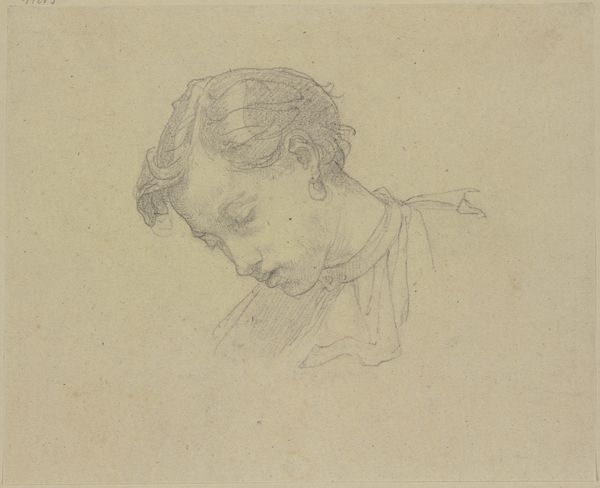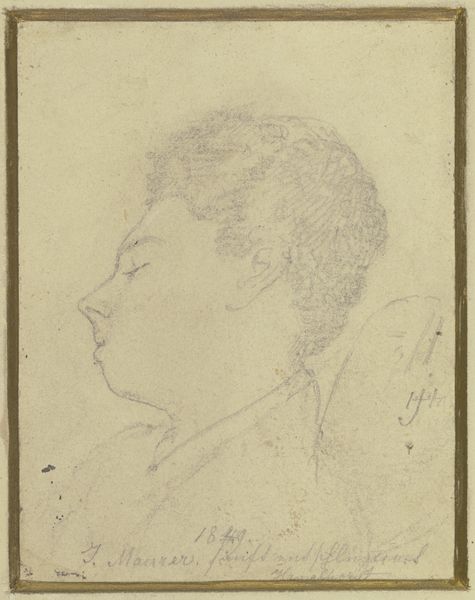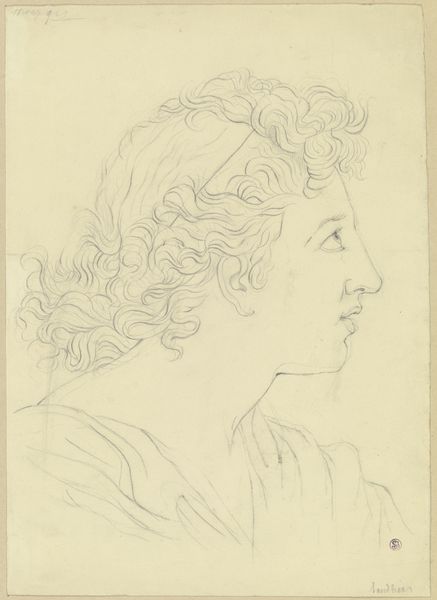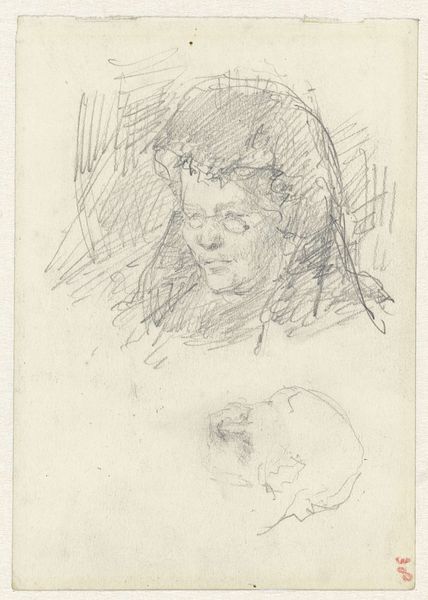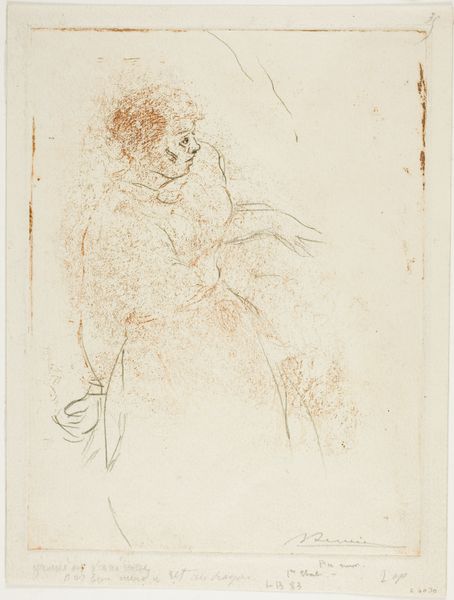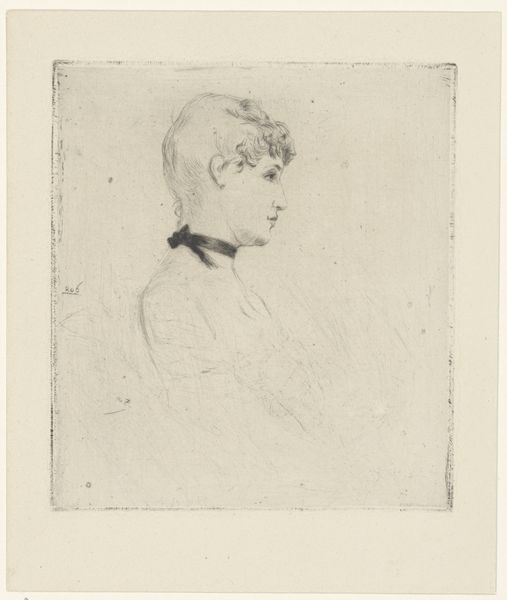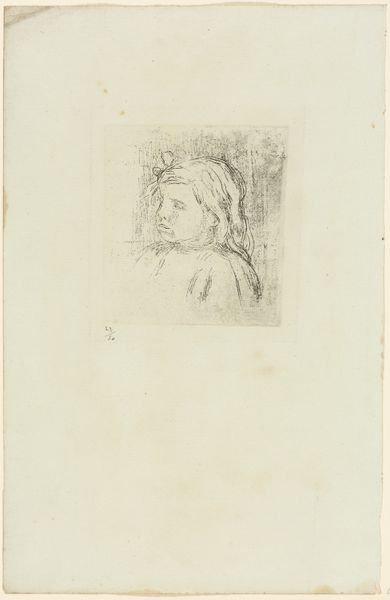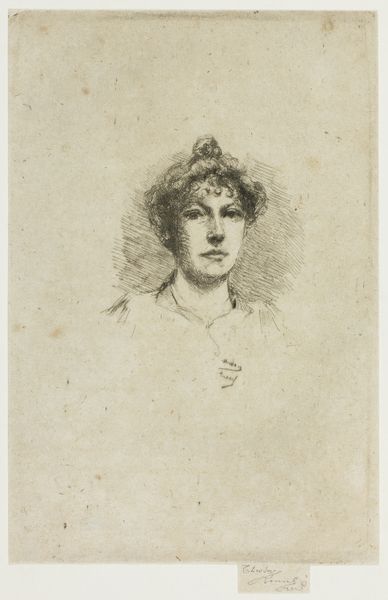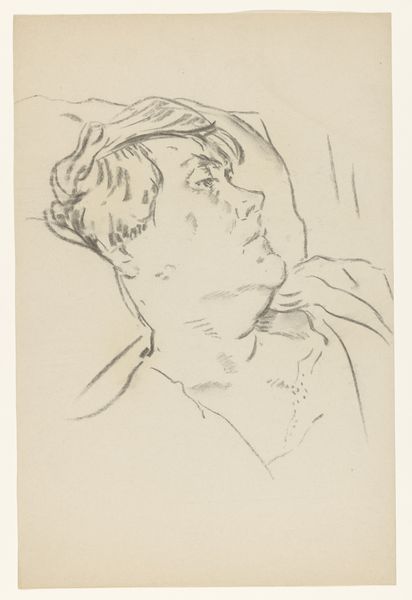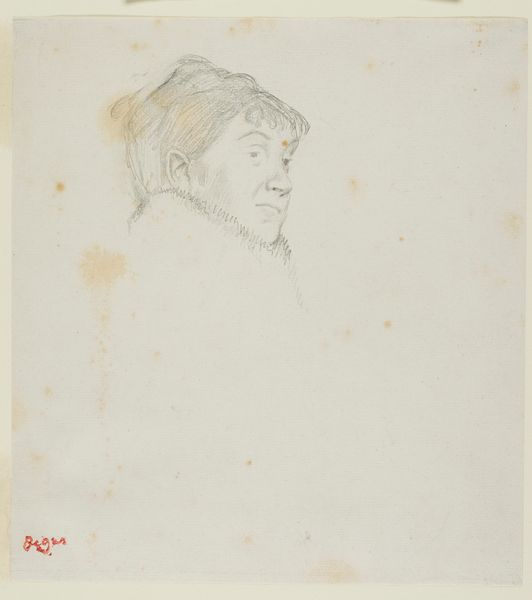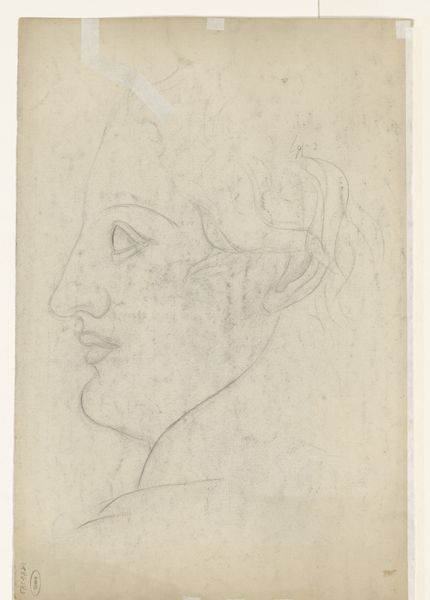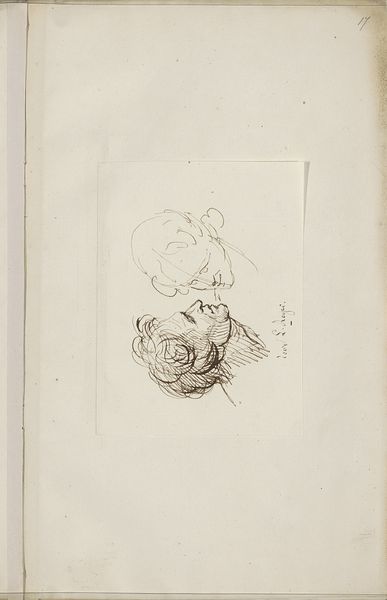
drawing, paper, pencil, graphite
#
portrait
#
drawing
#
pencil sketch
#
etching
#
paper
#
pencil
#
graphite
#
realism
Dimensions: 180 × 112 mm
Copyright: Public Domain
Curator: At first glance, there's a certain tranquility about this portrait; the gentle curve of the neck and the downcast gaze...almost a serene acceptance. Editor: You've hit the nail on the head. The piece we’re looking at today is a graphite drawing, or a pencil sketch, on paper. It’s called "Sketch of Edith Austin" and was created around 1895 to 1900 by Theodore Roussel, and it currently resides at the Art Institute of Chicago. It’s an intimate glimpse, wouldn't you agree? Curator: Intimate is exactly the word. It reminds me of the way society used to frame feminine ideals of meekness, gentility, and introspection. You can practically see that encoded in her soft features. It's almost as if she's contemplating something deeply personal. The spots of foxing that litter the paper serve to intensify the subject's pensive mood. Editor: Ah, the foxing. To me, that discoloration adds another layer, speaking to the passage of time and how perceptions can be altered. This, to me, becomes a meditation not only on the subject but on the medium. Is it realism, like the tags propose? Well, is the life real anymore? Curator: Absolutely! There's a distinct connection between art and history that is inseparable. Here we have Roussel who attempts realism through a classical artistic mode; there is no explicit or clear psychological portrait of Edith but instead she’s a placeholder that signifies broader ideals about femininity and respectability. Editor: Yet Roussel has caught her looking downwards and in such quiet. And despite the conventions that may have influenced Roussel’s portrayal, a viewer is compelled to inquire about the model’s internal landscape, to consider her life as a modern woman at the turn of the century. How do we imagine her internal landscape? What would she want to reveal if we sat in quiet conversation? Curator: Precisely! I also notice Roussel uses light and shadow. The woman's face has very soft pencil strokes while there is the sharpest mark beneath her left cheek; could that darker contour denote how women at the time faced intense public scrutiny for self-expression? There’s a powerful symbol here! Editor: Interesting angle, and it makes one think about how this little pencil sketch on paper does a lot of heavy lifting through form and the simple choice of portraiture. So many historical nuances can be felt, just by sitting and considering its imagery. Curator: Yes. As time erodes details, symbolism remains, often revealing greater truths. What starts as realistic quickly grows into iconography.
Comments
No comments
Be the first to comment and join the conversation on the ultimate creative platform.
